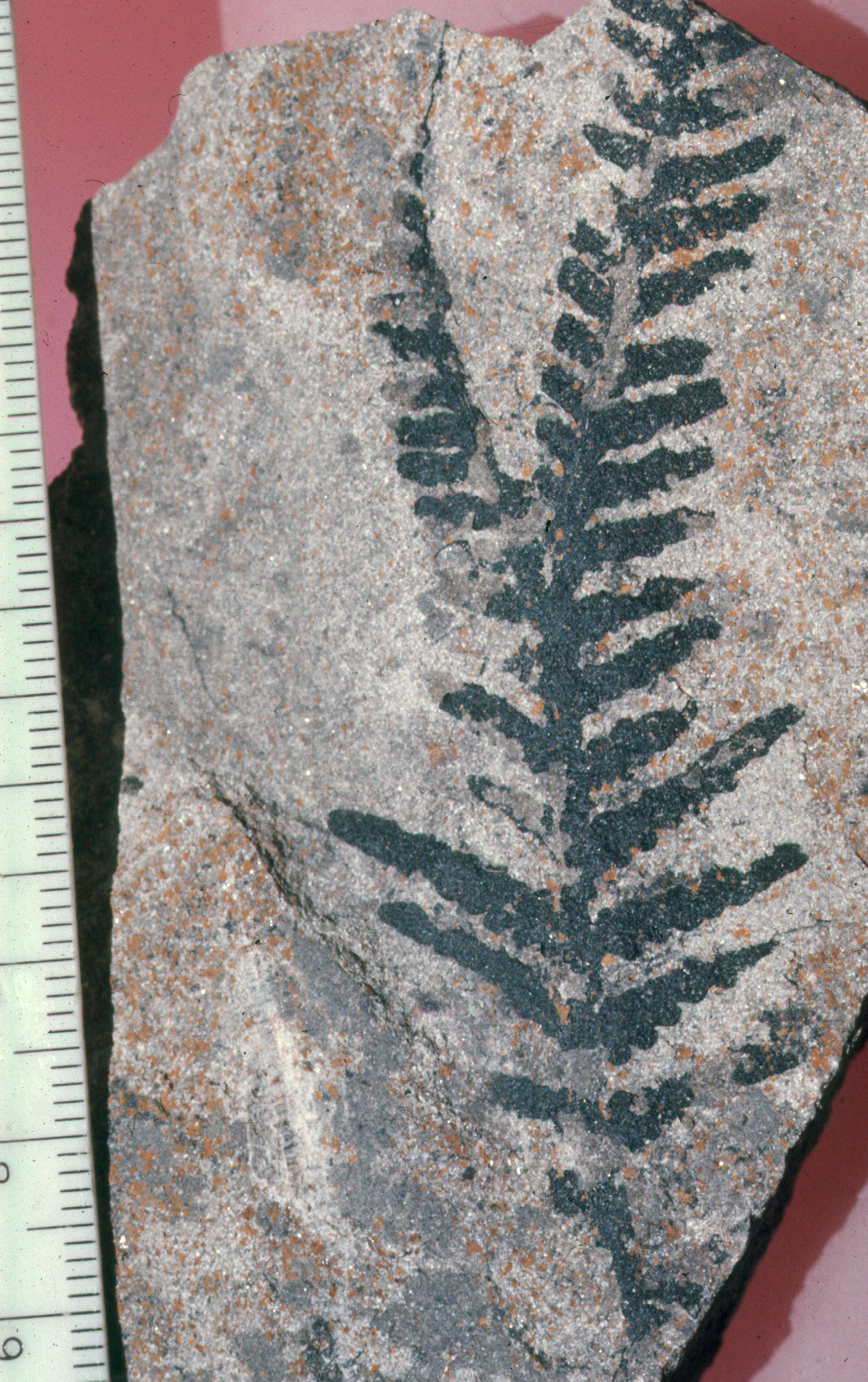Lepidopteris Callipteroides on:
[Wikipedia]
[Google]
[Amazon]
''Lepidopteris callipteroides'' is a form species for leaves of Late 


Permian plants Triassic plants Peltaspermales Permian first appearances Triassic extinctions {{triassic-plant-stub
Permian
The Permian ( ) is a geologic period and System (stratigraphy), stratigraphic system which spans 47 million years, from the end of the Carboniferous Period million years ago (Mya), to the beginning of the Triassic Period 251.902 Mya. It is the s ...
Pteridospermatophyta
Pteridospermatophyta, also called pteridosperms or seed ferns, are a polyphyletic grouping of extinct seed-producing plants. The earliest fossil evidence for plants of this type are the lyginopterids of late Devonian age. They flourished partic ...
, or seed ferns, which lived from around 252 million years ago in what is now Australia
Australia, officially the Commonwealth of Australia, is a country comprising mainland Australia, the mainland of the Australia (continent), Australian continent, the island of Tasmania and list of islands of Australia, numerous smaller isl ...
, and Madagascar
Madagascar, officially the Republic of Madagascar, is an island country that includes the island of Madagascar and numerous smaller peripheral islands. Lying off the southeastern coast of Africa, it is the world's List of islands by area, f ...
. ''Lepidopteris callipteroides'' was an immediate survivor of the largest Permian-Triassic extinction event, migrating southward with the post-apocalyptic greenhouse spike.



Description
In the form generic system ofpaleobotany
Paleobotany or palaeobotany, also known as paleophytology, is the branch of botany dealing with the recovery and identification of plant fossils from geological contexts, and their use for the biological reconstruction of past environments ( pal ...
''Lepidopteris'' is used only for leaves, which in ''Lepidopteris callipteroides'' is palmate with multiple dichotomies of the rachis. The cuticle of the leaves is thick and has distinctive cuticular structure with stomatal opening overhung by papillae, used to link the fossil leaves with well preserved ovulate structures of ''Peltaspermum townrovii'' and pollen organs of ''Permotheca helbyi'' in the same deposits
Atmospheric carbon dioxide paleobarometer
The cuticular structure of ''Lepidopteris callipteroides'' is comparable to that of modern ''Ginkgo
''Ginkgo'' is a genus of non-flowering seed plants, assigned to the gymnosperms. The scientific name is also used as the English common name. The order to which the genus belongs, Ginkgoales, first appeared in the Permian, , and ''Ginkgo'' is n ...
'', and has been used to estimate past atmospheric carbon dioxide of an astounding 7832 ppm from its stoma
In botany, a stoma (: stomata, from Greek language, Greek ''στόμα'', "mouth"), also called a stomate (: stomates), is a pore found in the Epidermis (botany), epidermis of leaves, stems, and other organs, that controls the rate of gas exc ...
tal index immediately following the largest Permian-Triassic extinction event.
References
External links
Permian plants Triassic plants Peltaspermales Permian first appearances Triassic extinctions {{triassic-plant-stub